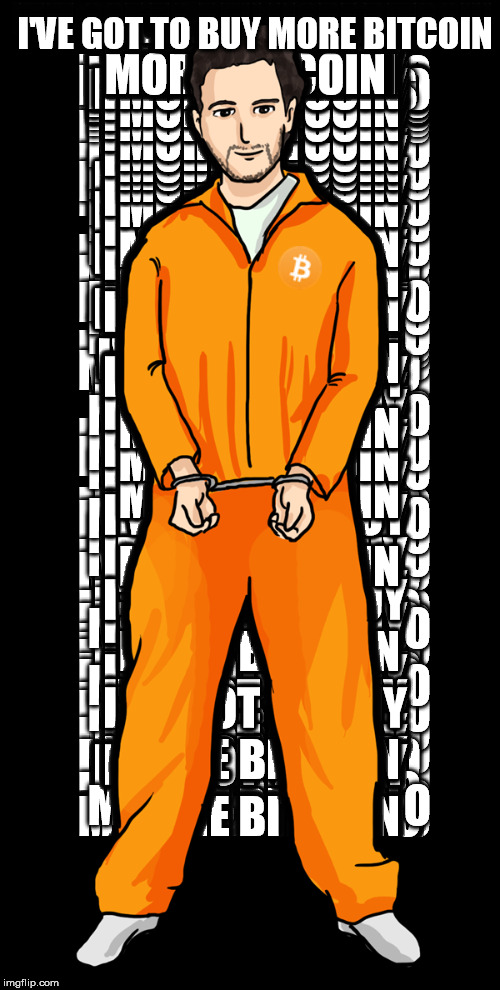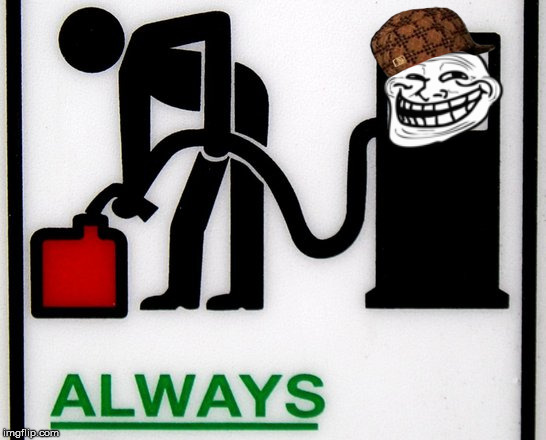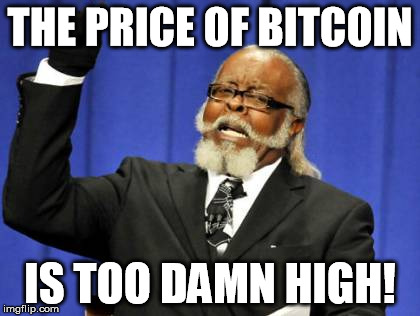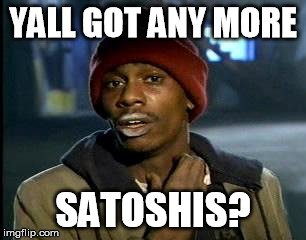A Historical Perspective on the True Nature of Bitcoin

I know this is a long post guys, but please read the whole way through...
As Bitcoin crosses the $11K USD mark, like many others, I am amazed. Here is this new asset class, a virtual entity, and people are falling over each other like its Black Friday to buy it. I find myself discussing my crypto research with others more and more often lately. I was comparing Proof of Work algorithm coins versus Proof of Stake coins the other day with a friend, when we started to debate value propositions. We inadvertently stumbled on a rather startling conclusion (which I will share with you a bit later in this post).
You see, the SUBJECTIVE VALUE (value proposition) of contemporary currency (USD for example) is based in it's functional context. As long as gas stations, groceries, schools, and various other merchants express an interest in acquiring this "thing", it has a value based on its support.
As far as money and it's OBJECTIVE VALUE, this used to be a characteristic that was not up for debate. Citizens of the world expected their money to be WORTH something, objectively. That is why U.S. dollars were printed under a gold standard, which stated that the dollar can be redeemed for an equivalent quantity of gold at the bearer's discretion. Imagine, you could take a pile of paper bills, walk down to the bank and demand gold for them. It almost seems unimaginable in a world where we toss dollar bills around haphazardly at parking meters, snack machines, and panhandlers.
Let's look at what has happened with the U.S. dollar, and money in general, over the last century.
[History Lesson begins]
In 1913, the Federal Reserve bank was formed. You can read about the dubious nature of this occurrence in The Creature from Jekyll Island by G. Edward Griffin. It was a scam to hand over the financial reigns of government to a private cartel of bankers. Woodrow Wilson sheepishly conceded to the bankers and allowed them to begin taking over.
Margin calls instituted in 1929, following a period of "quantitative easing" known as the Roaring Twenties, precipitated the devaluation and collapse of the economic system. Community and local banks went out of business as everyone panicked and began pulling money out from their accounts. In 1929, there were 24,633 banks. By 1933, only 15,015 were still in business, a decrease of 39 percent. Following this period of consolidation of the financial industry, can be historically considered the birth of Wall Street.
In 1932, Franklin Roosevelt was elected President of the United States after promising to take forceful steps to improve the economic situation. In 1933, with the cooperation of the U.S. Congress, Roosevelt made it illegal for Americans to possess gold coins or bullion. He then took away the right of Americans to be able to exchange paper money for gold. Finally, he confiscated all the privately held gold in the country by forcing people to trade it to the government for paper money at the rate of $20.67/ounce.
Within a year, the U.S. government owned most of the gold in the country. Then, on January 31, 1934, Roosevelt used the authority given to him by Congress to unilaterally raise the price of gold to $35/ounce. Overnight, an ounce of gold that used to be worth $20.67 was now worth $35. Making this price change allowed Roosevelt to pull a fast one, a monetary scheme that would add over $3 billion USD to the government's balance sheet, but simultaneously devalued the currency over 40% (at least versus gold).

In 1944 in Bretton Woods, New Hampshire, representatives from 44 nations met to develop a new international monetary system that came to be known as the Bretton Woods system. It was not until 1958 that the Bretton Woods system became fully operational. Countries now settled their international accounts in dollars that could be converted to gold at a fixed exchange rate of $35 per ounce, which was redeemable by the U.S. government. Thus, the United States was committed to backing every dollar overseas with gold. Other currencies were fixed to the dollar, and the dollar was pegged to gold.
The U.S. ties to the gold standard were finally severed by Richard Nixon. To keep foreign countries from trading in their surplus dollars for gold, Nixon, in 1971, unilaterally decreed that, from now on, the U.S. would not exchange dollars for gold for anyone, in a move that came to be known as Nixon Shock. For all practical purposes, the United States was off the gold standard. In 1978, Congress passed a law making it official. Other countries had passed similar laws, and by the end of the 1970s, no major currency was redeemable in gold.
As early as 1969, digital trading systems called electronic communications networks (ECNs) were being used by brokerages to display in-house the bid and ask prices for stocks. By the late 1980s, as the financial industry began to realize the potential of a public internet and ownership of personal computers was growing in popularity, some of the leading brokerages began to look more closely at ECNs. Several industrious brokerages either developed software or bought companies that had developed software to link up stock traders with current stock price information, thereby matching up buyers with sellers easily and efficiently and with significant cost savings.
In 1973, under Belgian leadership and supported by 239 banks in fifteen countries, the Society for Worldwide Interbank Financial Telecommunication, or SWIFT, is formed. SWIFT does not facilitate funds transfer: rather, it sends payment orders, which must be settled by correspondent accounts that the institutions have with each other. Each financial institution, to exchange banking transactions, must have a banking relationship by either being a bank or affiliating itself with one (or more) so as to enjoy those particular business features. SWIFT's first United States operating center was inaugurated by Governor John N. Dalton of Virginia in 1979.

In 1980, the United States Congress granted all thrifts, including savings and loan associations, the power to make consumer and commercial loans and to issue transaction accounts. Designed to help the thrift industry retain its deposit base and to improve its profitability, the Depository Institutions Deregulation and Monetary Control Act (DIDMCA) of 1980 allowed thrifts to make consumer loans up to 20 percent of their assets, issue credit cards, accept negotiable order of withdrawal accounts from individuals and nonprofit organizations, and invest up to 20 percent of their assets in commercial real estate loans.
In 1982, the first full service electronic consumer equity trading system for buying and selling stocks, mutual funds and commodities using a PC came online. It was called NAICO-NET and it was offered by a company called North American Holding Corp. located in East Hartford, CT. The system was ANSI based, meaning it was terminal based but IBM PCs could connect to it via a simple application and it connected traders from all over the world.
The savings and loan crisis of the 1980s and 1990s (commonly dubbed the S&L crisis) was the failure of 1,043 out of the 3,234 savings and loan associations in the United States from 1986 to 1995: the Federal Savings and Loan Insurance Corporation (FSLIC) closed or otherwise resolved 296 institutions from 1986 to 1989. Further financial authority is consolidated.

By the mid-1990s, more than 20 percent of the nation’s population was investing in stock, compared with less than 5 percent the decade before. To illustrate the impact this had on E*Trades’ bottom line, its revenues increased from $850,000 in 1992 to $11 million in 1994 and was rated as the fastest growing company in America that year. The rush to become an online stock trading broker was on!
[History Lesson concludes]
This brings me to Bitcoin. Here is a program, developed in C++ of all languages, using SHA256 encryption.
What do we know about SHA256 encryption?
"The Secure Hash Algorithm (SHA) was developed by the NIST in association with the NSA and first published in May 1993 as the Secure Hash Standard. The first revision to this algorithm was published in 1995 due to a unpublished flaw found, and was called SHA-1."
~ Chapter 1, Cryptography In Context, written by Wouter Penard and Tim van Werkhoven.
SHA256 was created by the U.S. Intelligence Services. It also happens to be the encryption used in Bitcoin. It's C++ coding would also date it to a 90's creation, most likely. But this isn't the even the most surprising aspect of the whole deal.

As we all know, petroleum industries have been serving U.S. government interests domestically and abroad throughout this century. This is why every attempt to bring forth an electric vehicle, beginning with Henry Ford's prototype, and then countless others, were railroaded with governmental assistance. Same thing with cheaper electricity, when Nikola Tesla made his propositions regarding free power for all. U.S. consumers represent the most attractive energy market in the world for producers.

As the internet makes information more readily available regarding the harmful impacts of gas, oil, coal, and nuclear energy production, the demand for these technologies begins to decrease. Now we are hearing more about geothermal, solar, wind, and other renewable forms of energy production, that are increasing in demand. Even though the industry leaders have been suppressing this transition, people are starting to demand replacing fossil-fuel with electric.
Here is the real whopper that we figured out. Bitcoin's OBJECTIVE VALUE. The value proposition for 1 bitcoin, is the energy consumed in its mining. In its infancy, the block difficulty was so low, that the energy consumption to produce 1 BTC was relatively low. Therefore its value was low. Speculation aside, the value of the electricity that has to be consumed at current block difficulty, and subsequent difficulty levels in the future, is turning into an expensive proposition. Just check out this article that was published by CBS two weeks ago.
https://www.cbsnews.com/news/bitcoin-mining-energy-consumption/
This trend of increased energy requirement is going to continue, and with it, will drive the price of electricity up worldwide! Just in time for those renewable technologies to come to market. Oh you want kWh's for cheap because geothermal is free energy? Sorry, demand is too high!

We need to realize that Bitcoin is an extremely sophisticated, elite-funded operation, designed to re-order the world banking and energy consumption marketplaces, and maintain the status quo. Get involved in app development, support Proof of Stake coin projects, and most importantly, educate others. If everyone just blindly marches towards Bitcoin, it will just replace the U.S. dollar, and we will have another century of financial enslavement...

I'd like to hear your thoughts Steemit community! Reply, follow, and support if you can!
►Donations are a blessing, and as such, are repaid in prayers and content!
If you can, please donate! Thank you!
►ETH: 0x37ed0b619e645d7be4cf1ee155d3ad83e7f1057d
►LTC: LTVzRFzQ2rtCUPXbRLEz7u3XAxfwbgVTsf
►WAVES: 3PPz568ymFAQfqBYWWcJFdAsWngJ4QjCtgd
►XEM: NBT7IG-CRKUKH-SBIZ2X-SPHVYQ-PNT736-RM5TSP-IJET
►DASH: XixVjdta8kp43FpmZPrDaSS5ykeQCYcPT3
►BTC: 16vNkxCyyifzBcqUp8Be8aX9AQ22F1AWVm
Excellent historical summary! And yes, I thoroughly believe that BTC is a government led creation for the purposes of moving us to not only a digital currency, but also to destroy independent national currencies and transfer humanity to a more centralized global currency model.
Bitcoin itself does not really concern me all that much since I see it as the prototype currency developed by the NSA. I honestly think that the NSA and the broader government think tank that developed it are socially experimenting with it right now. They are also backing other new cryptocurrencies behind the scenes along with other governments around the world. The cryptos market is currently the play den of intelligence agencies and central banks. If you want to know more, you need to have a look at my previous posts on symbolism in the new cryptos. These are not just small crypto geek projects anymore. They are funded and led (and later pumped) by much bigger players behind the scenes - intelligence agencies, governments, crime syndicates, you name it.
For BTC, yes, you could say that its legitimate value is the amount of energy that goes into mining it, but I would say that, just as with any fiat currency, its rather about how much it is perceived to be worth due to its scarcity vs. its demand. I am also not convinced that the use of crypto mining is intended to drive energy costs up and support the energy suppliers if this is what you are implying. Mining is a short term proposition in any case due to the number of coins that can be mined and the new cryptocurrencies are moving to other staking models (or even hashgraph) regardless since mining is clunky as hell and drives horribly wrong incentives with the miners. (This is why we have all these ridiculous BTC hard forks.)
Although I believe in metals backed currencies for the sake of ensuring fraud is not perpetrated on the people, if the value of a non-backed currency goes primarily to the people and not the government or other 3rd parties (e.g. BTC miners, BTC initial creators, etc.) then a non-backed currency model can even be a good thing. The issue you have to face instead is the volatility and price instability. Usually, this is not the case for a commodity backed currency since usually there is stability in prices based upon the value of the backing commodity. However, this also assumes that there is not a hard limit on the commodity, otherwise demand will outstrip supply (i.e. deflation) for a very long time. (This is the current Bitcoin model.)
The Continental used by the original colonies had no backing whatsoever, but was not abused by the colonial government of the time. This meant that the majority of the value went to the people. In fact, if you managed this model correctly, no taxes would need to be paid because the creation of new money would pay for the government and the only cost the citizen would pay is a slight bit of inflation. Instead what we have today is a government that not only inflates the hell out of the currency to no end (tax number one), you have countless taxes on top to steal every last cent from the populace for Deep State wars and black projects. The corruption of the system is at a degree that is almost unfathomable due to the incalculable taxation and hidden electronic government and banking theft via electronic inflation.
(You might like this article as a counter to the BTC energy costs story as well: Did Anyone Do Even a Minimal Check on the Sensationalist Bitcoin Electrical Consumption Story?)
The mined model of Bitcoin has different problems. Bitcoin is deflationary and sucks in money like crazy as people try to make significant returns in lieu of the worthless government cash and other worthless Ponzi-like investments available in the marketplace. Traditionally, this money would go to metals in such an economic environment instead, but the metals market has been eviscerated for ages by paper derivatives. Since governments can't yet apply significant derivatives to Bitcoin, it is taking off like a metal would in such situations, hence Bitcoin being called digital gold. If there were other legitimate investment opportunities and the currencies weren't being inflated ad infinitum, then the cryptos wouldn't be going anywhere right now in my opinion. The investment case wouldn't be there for them.
Sorry, I've basically turned this into a separate post and will turn this into a proper post back on my blog to address what I think is the right longer term solution. I'll leave it that Bitcoin is not the final solution and has not been planned to be. Bitcoin is an experiment to create the first digital money. The real game is starting now after seven years of watching how the populace reacts to it. What comes next is what we need to be truly afraid of.
I concur with your sentiments sir. I do however think that the "energy demand/cost" aspect to this whole thing is an important one. The Bushes, the Rockefellers, the Kochs, and many other deep state elite were instrumental in converting Petroleum production into a fascist-industry (meaning supported directly by the state in favor of others). PoW/BTC energy costs are exponentially increasing over time. Just analyze the block difficulty increase, and consider what will happen when only say, 1 million coins, remain to be mined. This will spur a wave of new demand, even though the costs will be prohibitive and the returns unlikely to be profitable, people will be going mad for a Bitcoin, that by John McAfee's estimates, will be pegged at $1mil USD by then. Look into the connections with the energy conglomerates and you will see, it's a bigger part of the plan than it seems on its face.
Hilarious and informative post. In a nutshell, yes, I agree . This reminds me of a new version of the 'Free Thought Project.' Cryptocurrency: Financial Freedom or Enslavement?
If you wrote this this was very well done. premium quality post, regardless of the fact that I disagree.
It's a hard sell to say that the intention of bitcoin is to raise energy prices. If the process of mining BTC took up as much power as the data centers in Virginia for example; then it might hold ground. The premise that the conspiracy causes the average joe to buy an ASIC and use power to increase price is interesting but a bit far fetched.
Thank you. I try to put things into perspective. Its not about the public, its about the market-determined price of a kWh. Corporate enterprises affect the marketplace cost of energy far more than "average joes". This is mostly due to the fact that utility costs are usually written off as a business expense, so the higher rate per kWh, is really about pegging residential rates, as a function of proportion to the commercial rate. Hopefully that makes sense. It's not a popular opinion with all the BTC fanboys running around lately, but I am not posting here to make friends, but warn and inform. Proof of Stake is the future, Proof of Work is slavery.
Congratulations @survivofit! You received a personal award!
You can view your badges on your Steem Board and compare to others on the Steem Ranking
Vote for @Steemitboard as a witness to get one more award and increased upvotes!